Sitting volleyball is a form of volleyball for athletes with a disability organized by World ParaVolley. As opposed to standing volleyball, sitting volleyball players must sit on the floor to play.
Basic Introduction (from https://sportswithoutlimits.hk/wp-content/uploads/2021/10/sitting_volleyball_-_training_materials.pdf):
1) Understanding the Difference between volleyball and sitting volleyball
Sitting Volleyball:
1. The playing court is 6 meters X 10 meters
2. The attack line 2 meter
3. The net: 6.50 to 7.00 meters long, 80 centimeters (0.80 meter) wide
4. The height of the net:
women 1.05 meters men 1.15 meters 5. The positions of the players are determined and controlled by the positions of their buttocks.
This means that the hand(s) and/or leg(s) of the players may lie in the attack zone (back-row player during an attack hit), in the court (server during the service hit), or in the free zone outside the court (any player during the service hit).
6. At the moment the server hits the ball, he/she must be in the service zone and his/her buttocks must not touch the court (end line included)
7. The front-row players are allowed to block the service of the opponent.
8. The player must have contact with the court with the part of the body from the shoulders to the buttocks at all times when playing the ball. To stand up, raise or take steps is forbidden. A short loss of contact with the court is permitted when playing the ball, excluding the service, the block and attack hit when the ball is completely higher than the top of the net.
Volleyball (Traditional):
1. The playing court is 9 meters X 18 meters
2. The attack line 3 meter
3. The net: 9.50 to 10.00 meters long, 1 meter wide
4. The height of the net
women 2.24 meters men 2.43 meters 5. The positions of the players are determined and controlled by the position of their feet contacting the ground.
6. At the moment the server hits the ball or takes off (for jump serve), his/her feet must not touch the court (end line included). After this hit, the server may step or land outside the service zone or inside the court.
7. It is a blocking fault to block the opponent’s service.
2) Understanding the Rules
3) Sitting & Movement Positions
4) Sitting Volleyball Actions
Pics below from https://sportswithoutlimits.hk/wp-content/uploads/2021/10/sitting_volleyball_-_training_materials.pdf:
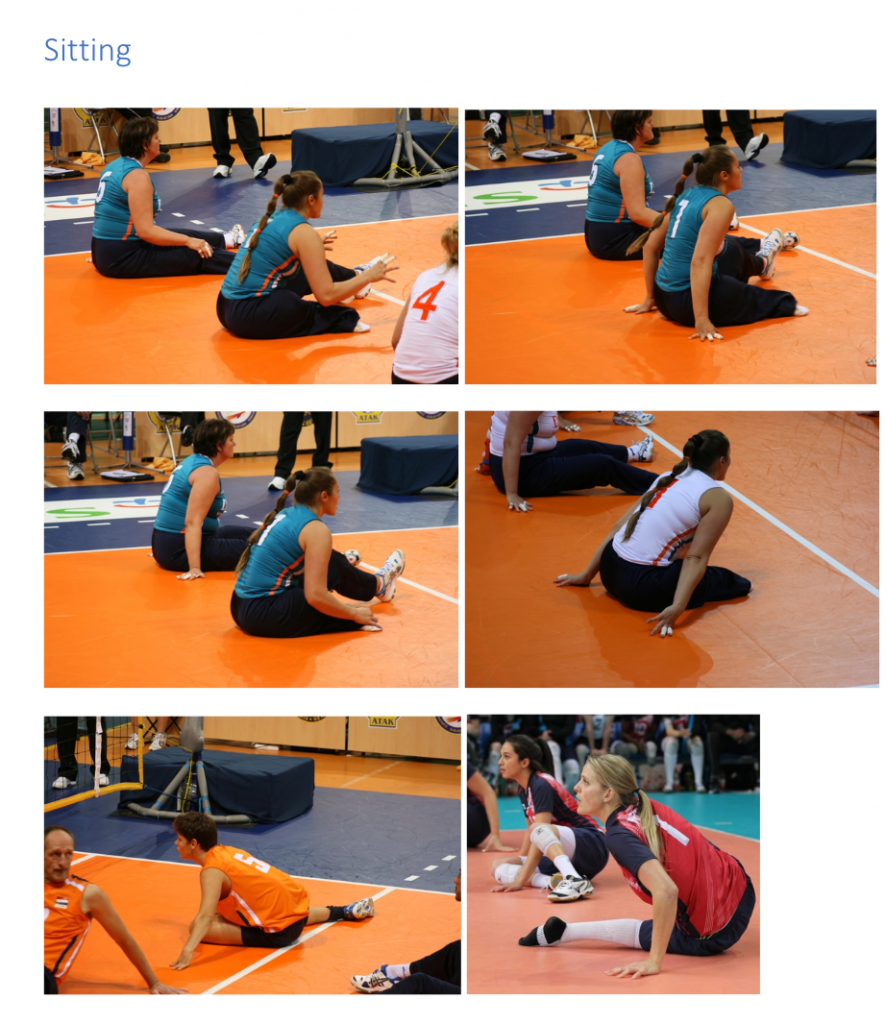
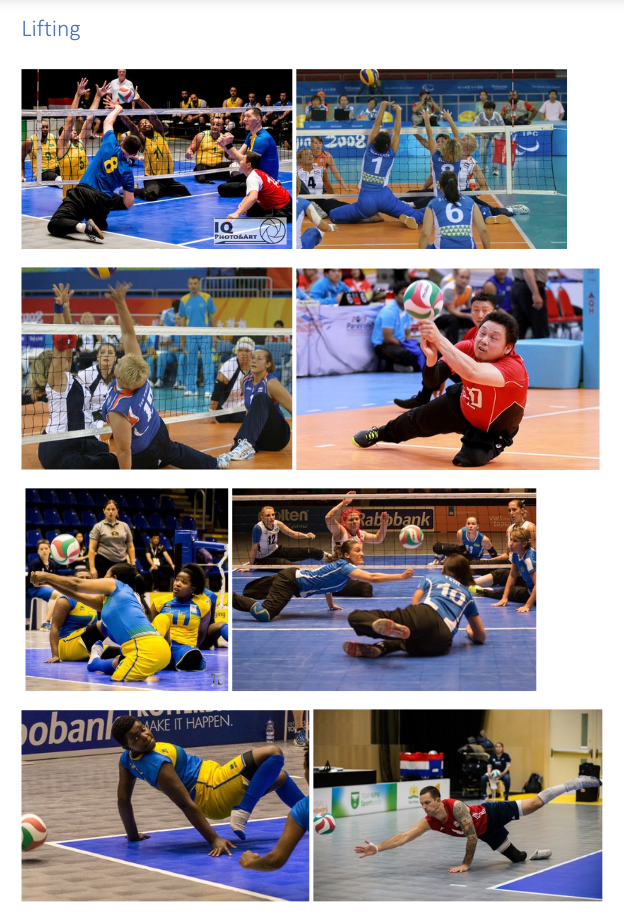
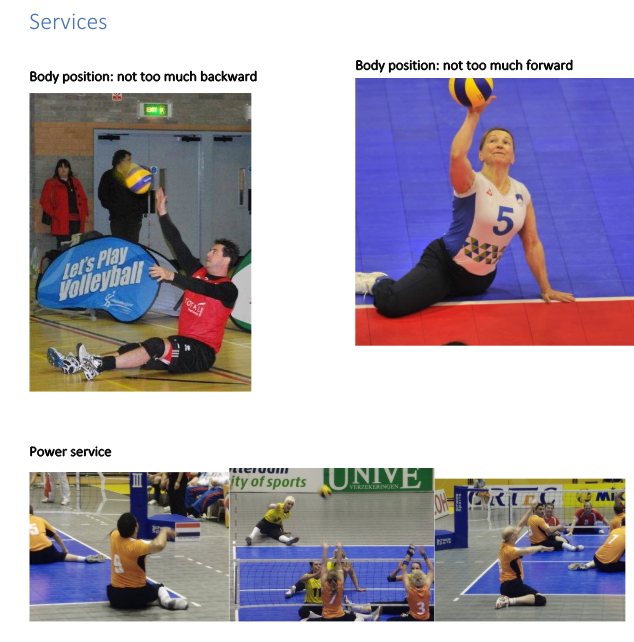
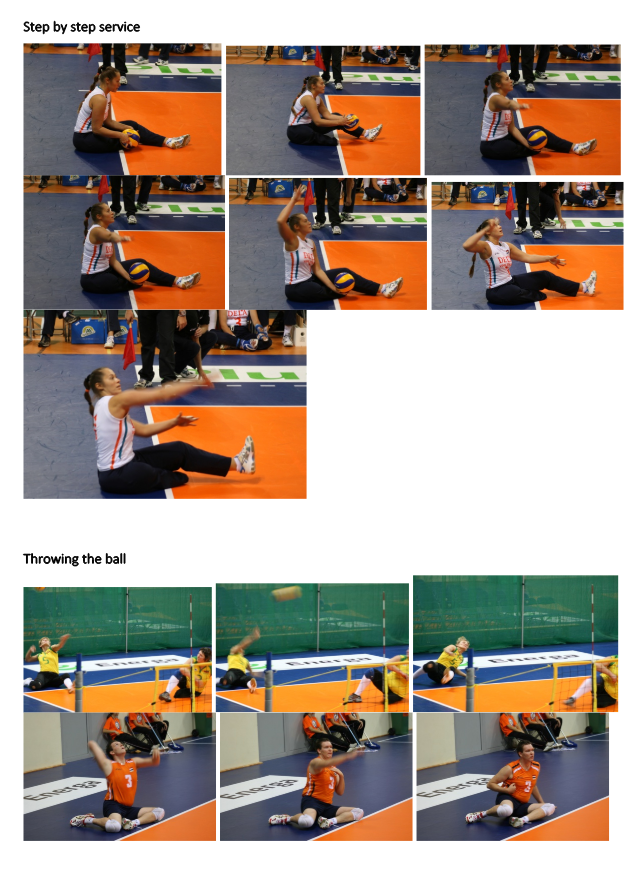
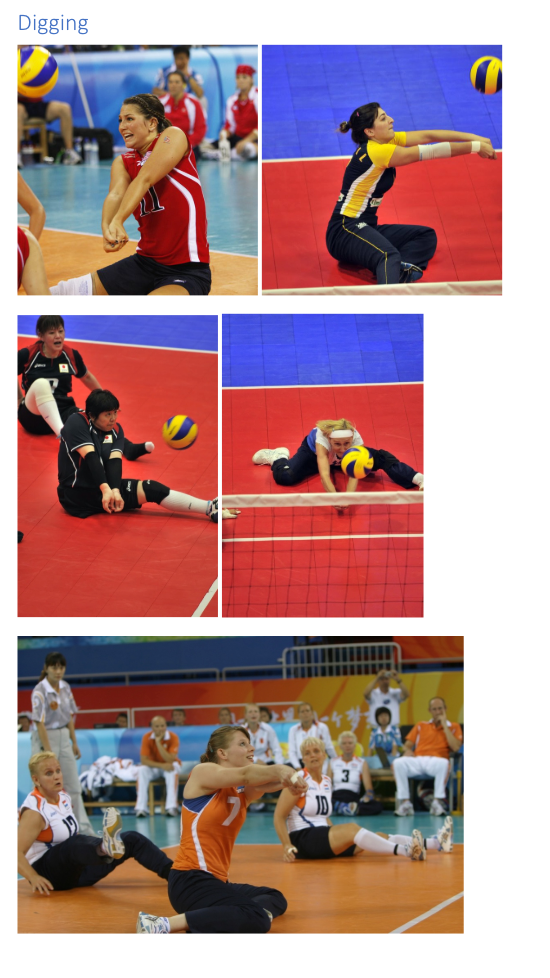

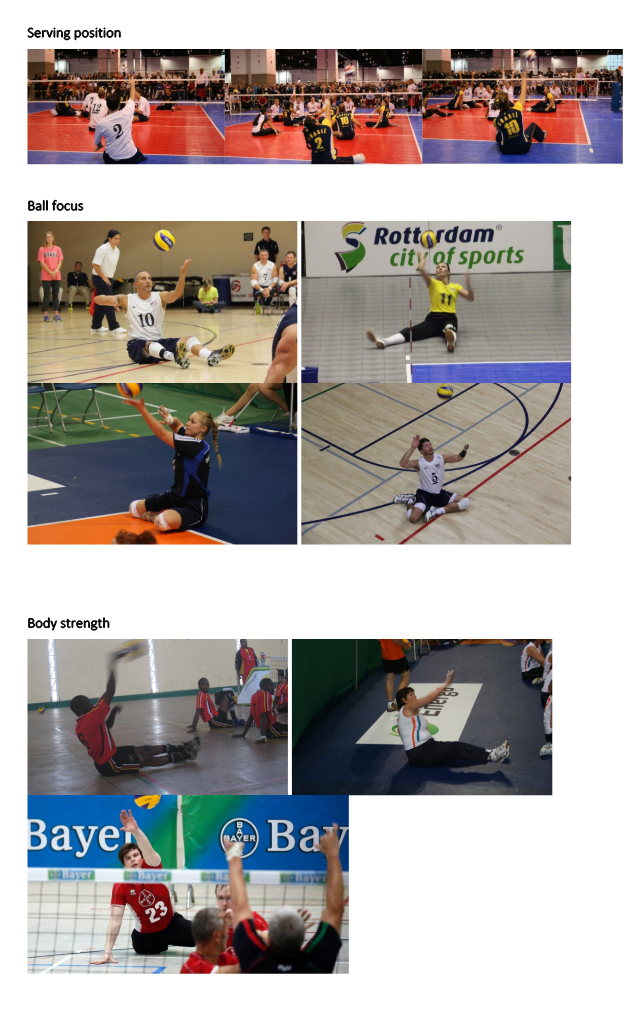
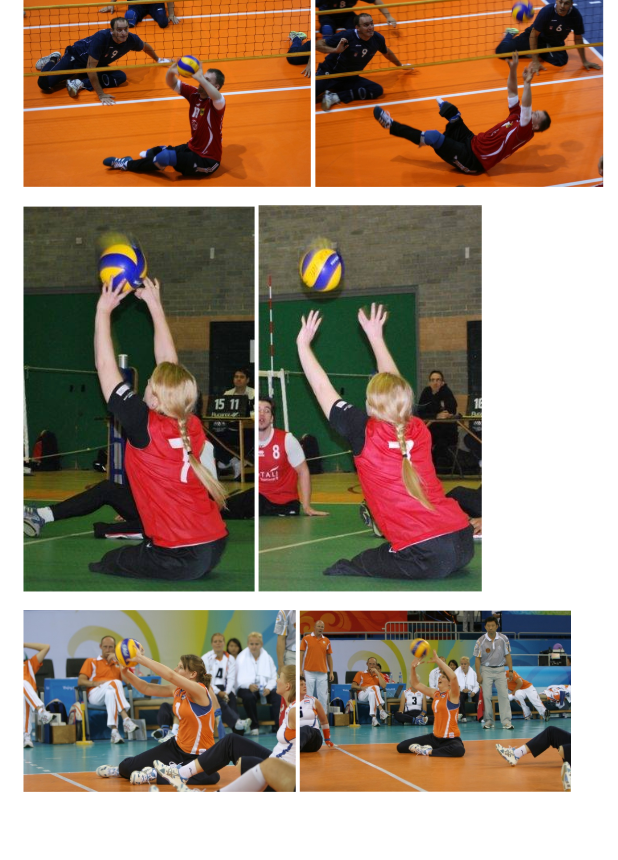
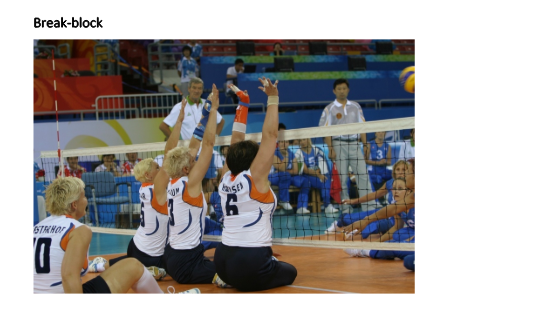
Pics above from https://sportswithoutlimits.hk/wp-content/uploads/2021/10/sitting_volleyball_-_training_materials.pdf:
